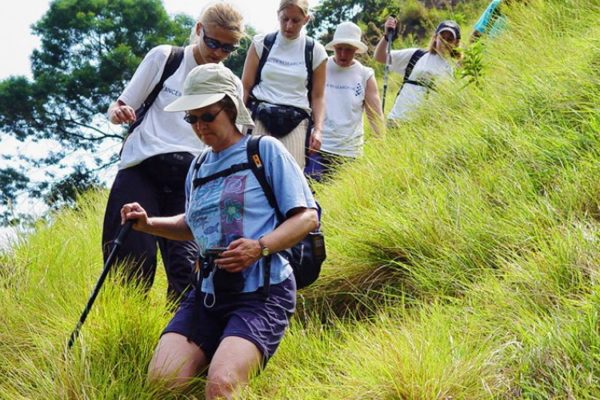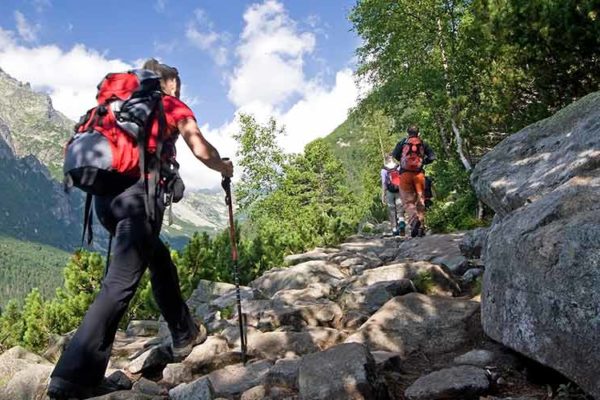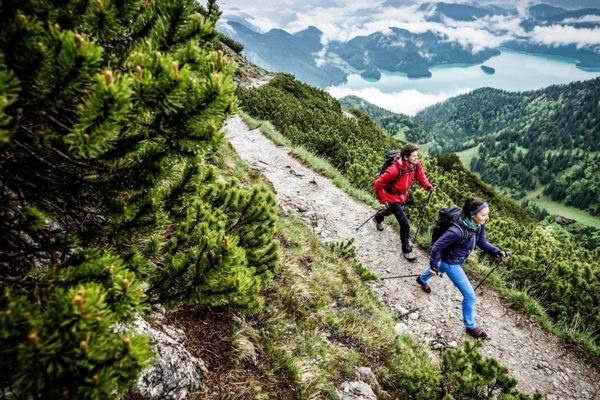Disclosure: As an Amazon Associate and an Affiliate of other programmes, I earn from qualifying purchases. This page may contain affiliate links, which means I may receive a commission if you click a link and purchase something that I have recommended. There is never an additional cost to you.
Table of Contents
Trekking poles have always been used, but in many forms and guises. The first Trekking poles would have been simple walking sticks, but just like other common accessories, they evolve, so to provide people with easier access and make them more adaptable.
If you’re wondering what is a trekking pole, then please read on. We will try to answer this question and many others, including the best way to use them, which features they should have and the major health benefits in using them.
What Is a Trekking Pole?
Trekking poles and simply poles made from metal that are used to support you, when either hiking or walking.
There are usually 2 or 3 extendable sections, so you can adjust the length of the pole when necessary. This is extremely useful if you’re traversing different types of difficult terrain, such as deserts or rocky cliffs.

In recent times, they have more features that make the user experience more pleasant, such as the baskets at the bottom of the Trekking poles that can alleviate the impact of them hitting the ground or rocks. They also use wrist straps that help you tighten the poles to your arms giving you additional support and better overall handling.
Also, they now have sport handles, made of rubber, that are ergonomically designed to be more comfortable.
The History of Trekking Poles
Imagine our ancient ancestors, forced to walk long distances to gather food, water and other resources. They would probably at some time, need a walking stick to aid them climb rocks and hills. This practice has continued throughout the years, with the walking sticks evolving into what we know know to be Trekking poles.
The original walking sticks would have been made of wood and crude in shape and use, but with the bronze age, came new materials to use, and then modern civilizations would have made metal or composite walking sticks. These are more able to withstand the demands of modern man/women.
Lots of different combinations and metals would have been tried and tested over this long period, on various terrains, such as hills, mountains, forests, deserts etc, until finally, the human race settled on carbon fibre or aluminium Trekking poles that we find today.
Additional features were added such as ergonomic handlebars and wrist straps to make the modern day Trekking pole a must have trekking feature.
Why trekking poles?
This is a fairly common question for many a hiker or backpacker who hasn’t used trekking poles or a walking staff before. And it is a question with multiple answers. The following will examine some of the benefits of using poles and explain why our Travel Specialists don’t tackle any adventure without them. Even on flat or rolling terrain, transferring some of the weight of your pack from your back and your knees to your arms and your poles can reduce fatigue and keep you moving stronger and faster. This is especially important as the weight starts to catch up with you over the course of an especially long day of hiking.
How Are Trekking Poles Most Commonly Used?
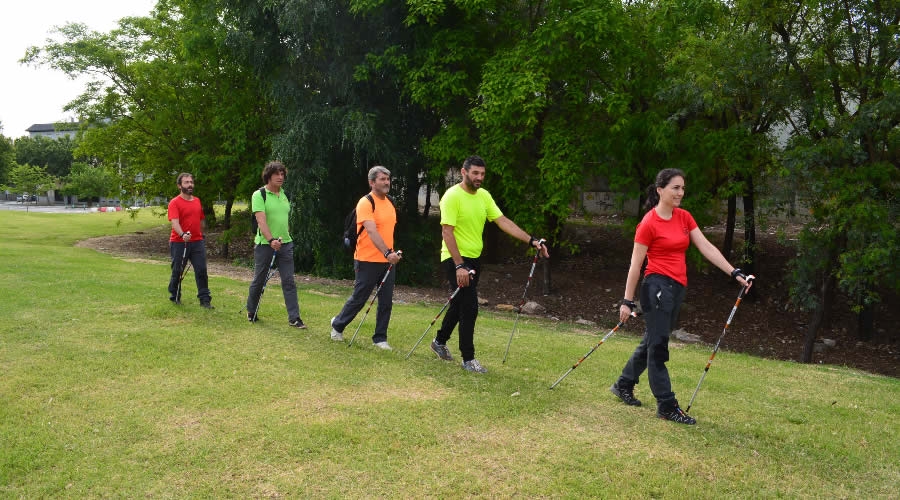
Basically, Trekking poles are used by hikers, walkers and other people who enjoy adventure and exercise combined. The Trekking poles they use help them get assistance and cadence to their walking paces. They aren’t needed as much when just walking on a level terrain, but they can still help provide an increase in speed and the amount of exercise they get, just from walking!
But where they really come into their own, is when the terrain starts to become more explicit and harder to handle. They provide much needed support when climbing cliffs, stones, or walking thought sand, water, or even mud. You will feel safer and feel less exponentially danger by using them.
Benefits of Using Trekking Poles
Nordic walking is one technique you can use by implementing your Trekking poles. This technique can significantly benefit your lung capacity, lower blood pressure and resting heart rate.
These are all problems that people can start to have as they get older and more susceptible to illness. So they tend to use Trekking poles to start exercising using different forms of walking.
Trekking poles help promote a more upright posture as you hike, this combats the natural tendency to lean forward or hunch as you become more tired. Standing straighter using the poles opens up your lungs, increasing their capacity as you take in more oxygen. This travels throughout the body and increases your heart capacity and allows muscles to stay stronger for longer
When climbing hills, all of your weight is driven down to your knees. By placing poles in front of you, you redistribute that weight and take the additional pressure off your knees and your back. Similarly, on a decent, the same joints are stressed, but also, the quadriceps muscles are also working overtime.
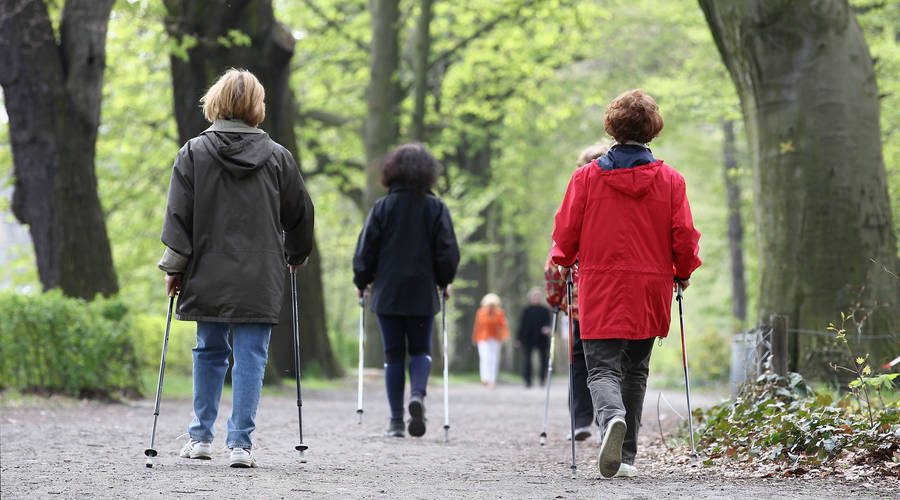
On hill climbs, with each step, all of the weight you are bearing is driven down onto your knees. By putting poles out in front of you, you redistribute that weight and take stress off the knees and off of your back, as well. Similar stresses occur on descents, but here quadriceps muscles are also working overtime and taking the brunt of that weight. By getting trekking poles out in front of you and redistributing that weight, you can really reduce muscle fatigue.
Navigating uneven terrain can be difficult at the best of times, but when you’re also carrying a heavy backpack, it can become treacherous. Trekking poles come in really handy here, providing extra stability and greater balance. Creek crossings are a fantastic example of why it’s better to have 3 or 4 contact points rather than relying on your own two legs. Trekking poles make you significantly more sure footed.
Environmental Concerns
Several organizations and even individuals have started complaining that Trekking poles are leaving an impact on hiking trials, as well as damaging the surrounding vegetation.
There is a solution to avoiding this problem. The easiest is to ensure you don’t use your Trekking poles on weak terrain or whenever you believe it might leave a mark. Of course, this is impossible for some people who use the poles for additional support.
For those people, just using rubber endings on the end of your Trekking poles, will minimise the physical impact they make.
Conclusion
We hope you enjoyed our article. Maybe you have learnt a few interesting facts along the way.
There are hardly any negative sides to this useful support accessory and we heartily agree if you feel you should try one in the near future.
You may have missed our last post “The 10 Most Dangerous Countries, Only For Tourist Without Fear!”
